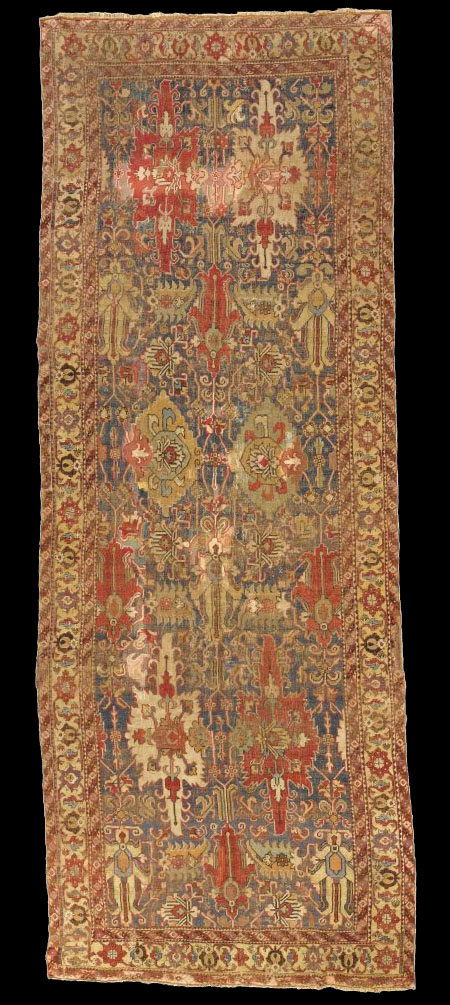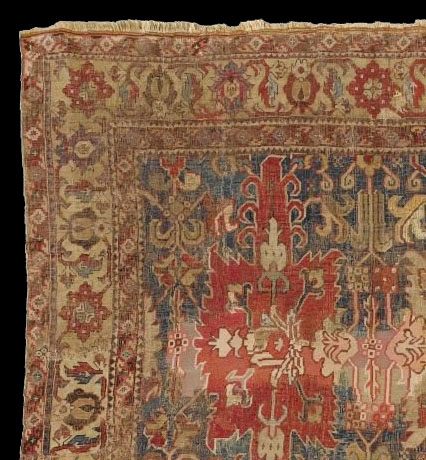|
Sotheby's Sale: N08503 | Location: New York
Auction Dates: Session 2: Tue, 25 Nov 08 2:00 PM
LOT 200 (of 147)
A CAUCASIAN 'BLOSSOM' CARPET,
18th century
reduced in length, missing outer guard stripes, rewoven areas, Kashmir
repiling, reselvaged
6,000—8,000 USD
Lot Sold. Hammer Price with Buyer's Premium: 10,000 USD
MEASUREMENTS: approximately 20ft. 4in. by 7ft. 8in. (6.20 by 2.34m.)
DESCRIPTION: 18th century
reduced in length, missing outer guard stripes, rewoven areas, Kashmir
repiling, reselvaged
CATALOGUE NOTE
This 'Blossom' carpet is one of the earliest types of Caucasian weavings.
Among all Caucasian carpets, those with 'Blossom' designs exhibit the
greatest variety of patterns and colors. Like most early Caucasian carpet
designs, the 'Blossom' also originated in Persia, where the floral motifs
would have been more organic and curvilinear. As design elements evolved
and reached the Caucasus, they became more stylized and geometric. While
there are many variations of the 'Blossom' design, the geometric rendering
of the floral elements is apparent in every version. The arrangement of
design elements along vertical axes in an endless pattern is also a
constant feature of these carpets, including the lot offered here with its
flower heads, palmettes, and leaves positioned on three vertical lines.
The disciplined arrangement of motifs on such a grid, coupled with the
stylized rendering of the vegetal elements, makes the overall design of
'Blossom' carpets particularly angular and abstract. Originally made for
wealthy homes in the Karabagh region, the examples that survive were most
likely removed from the region as war booty by the Ottoman armies in the
seventeenth and eighteenth centuries. However, carpets of such large size
were unsuitable for Ottoman homes and therefore were generally given to
mosques in eastern Anatolia where they survived for centuries. For a
selection of 'Blossom' carpets surviving in Turkey, see Serare Yetkin,
Early Caucasian Carpets in Turkey Vol. 1, London, 1978, plates, 40-97. For
closely related examples to the lot offered here, see Heinrich Kirchheim,
et. al., Orient Stars, London: Hali Publications, Ltd., p. 140, pl. 74 and
V. and L. Benguiat Private Collection of Rare Old Rugs, American Art
Association, New York, December 4-5, 1925, lot 25 and Charles Grant Ellis,
Early Caucasian Rugs, Washington, D.C., 1975, p. 66, pl. 18. A comparable
'Blossom' carpet was sold Sotheby's New York, December 14, 2006, lot 306.
|


